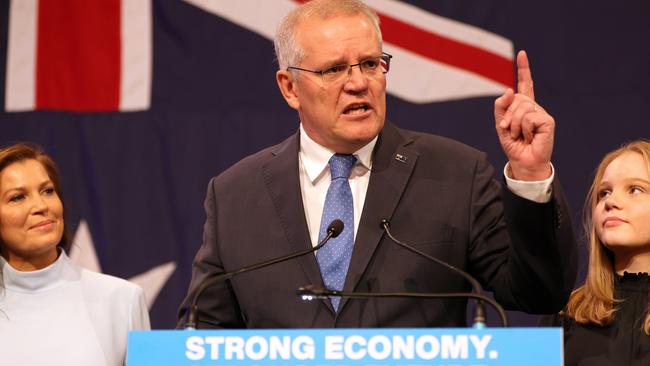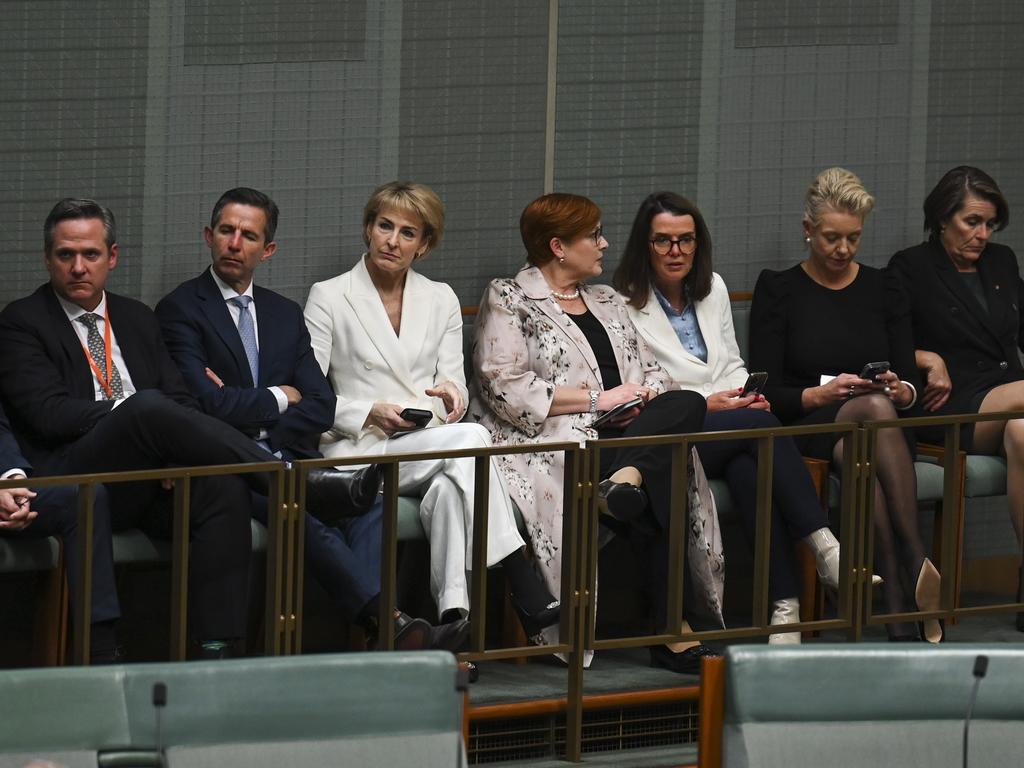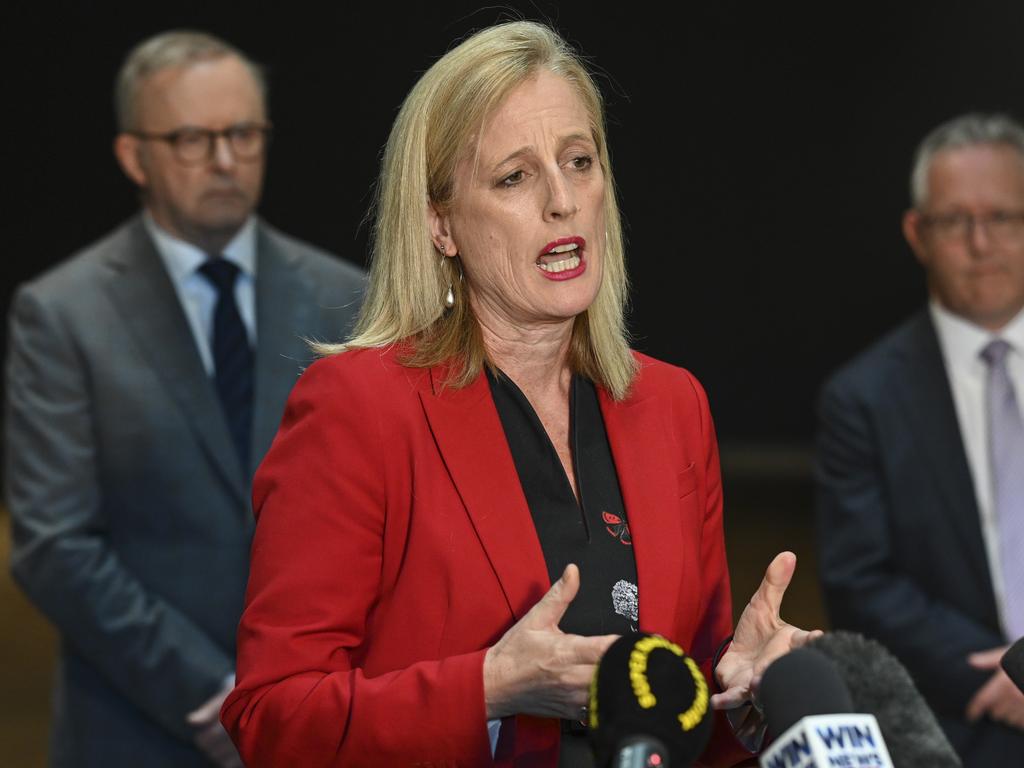Same votes but a different result in election if first-past-the-post system used
Under a ‘first past the post’ voting system, Scott Morrison’s Coalition would have been close to winning minority government with more seats than Labor.

It’s the untold tale of last year’s election. The Coalition won 73 seats, one more than Labor, and with two conservative-leaning crossbenchers returning to parliament, Scott Morrison looked a chance of forming a minority government.
It’s untold, of course, because it didn’t happen. In reality, Labor cruised to power, securing a narrow majority, and Anthony Albanese became the 31st person to hold the office of Prime Minister of Australia.
But apply a different voting system and the political landscape of the 47th parliament would have been strikingly different from what the nation’s preferential voting system delivered.
Under a “first past the post” system, where the candidate with the highest primary votes wins the seat, the results in 17 seats would have been different, potentially resulting in a minority Coalition government.
The election a year ago on Sunday was replete with unusual outcomes: a government that received primary votes from fewer than one in three Australians; a party winning from opposition despite its primary vote falling; a government MP who was elected with a larger number of preference votes than primary votes; and a 16-strong lower-house crossbench.
The power of preferences in determining not just individual seat winners but also who is in government has become greater with the drift of voters away from the major parties. In fewer than 20 years, the percentage of people casting a lower-house vote away from Labor and the Coalition parties has doubled: from 16 per cent at the 2004 election to 32 per cent last year.
The number of people who didn’t want to cast a vote for either major party was almost the same as put Labor first.
Labor got over the line last May with only 32.6 per cent of the primary vote, increasing its seat count by nine to win power, despite a primary vote swing of 0.8 per cent away from it.
Labor’s Richmond MP Justine Elliott finished with more than 58 per cent of the two-party-preferred vote, yet won only 28 per cent of the primary vote, in what is believed to be the first time a government MP has received a higher number of preference votes than primary votes.
Debate has long raged over preferential voting, which has operated in federal elections in Australia since 1918, versus the “first past the post” approach used in the US and Britain, as well as for Canada’s lower house.
A third option gaining traction in Britain is proportional representation, already used in Tasmanian elections and for the Senate. It is designed to produce an MP split more closely aligned to how primary votes were cast. A shift to proportional representation, which uses multi-member districts, would involve a major overhaul from the current single-member electorate system.
One of the key arguments for preferential voting is that it allows every ballot cast to have a greater say in who wins a seat, rather than “exhausting” if the candidate chosen first has been eliminated.
Critics of preferential voting point to the growing likelihood of independents or minor-party candidates winning seats, reducing the chances of a government gaining a legislative majority.
Britain’s wartime prime minister Winston Churchill famously declared that preferential-voting elections were “determined by the most worthless votes given for the most worthless candidates”.
UNSW associate professor David Lee said a preferential voting system would likely help Labor, Greens and teal independents win or retain seats in future elections, unless there was a large swing to the Coalition. However, it had typically favoured the Coalition in the past.
He said preferential voting was introduced in 1918 for both the Senate and the House of Representatives amid concern the non-Labor vote was being split in conservative country areas and putting minority seats at risk.
Associate Professor Lee compared last year’s result to the election win of Bob Hawke in 1983 when Labor swept to power off the back of votes to minor environmental parties.
Associate Professor Lee advocates for Australia to move to a proportional voting system.
Proportional representation was introduced in the Senate in 1948, giving minor parties and Independent Senators representation they would have not been granted under a preferential system and allowing them to hold the balance of power in the upper house.
“Preferential voting is fairer than first-past-the-post but proportional voting would be even fairer in terms of party representation,” he said.
“A proportional voting system like we have in the Senate allows parties to get representation according to their vote.”
One argument for proportional representation is it would iron out the inconsistencies caused by one party’s support base being concentrated in a few seats. The Greens currently hold four lower-house seats, having won 12.3 per cent of the national vote last May, compared with the Nationals having 16 seats on 5.3 per cent of all primary votes. But the Greens held 12 seats in the Senate, before Lidia Thorpe’s defection earlier this year.
Associate Professor Lee said the major parties have often railed against proportional voting amid concern it would be destabilising for the parliament, but he argued it would be a fairer system.
“Major parties are losing their first share of preference votes and that is an argument for moving towards a new system like proportional voting because major parties are no longer attracting large amounts of votes and minor parties are becoming increasingly important,” Associate Professor Lee said.
“The large parties wouldn’t support it because they don’t want an electoral system that won’t favour them but the way things are moving against the kind of dominance that the big parties have had in receiving the largest share of Australian votes.”
“The big parties like to say it’s destabilising but if you look at places like the European Union which is conducive to a multi-party system, or when we’ve had minority governments that have been quite successful in getting legislation passed. Having minority governments doesn’t actually lead to instability. I’d argue it encourages more democracy,” he said.
Australian National University’s Professor Ian McAllister said a switch back to a first-past-the-post system, which was used until 1918, would disadvantage minor parties with most votes going to the major parties. But it would significantly reduce the informal vote, with people better able to understand the ballot paper.
The 2022 election returned 77 lower-house Labor MPs, enough for a majority, along with 58 Coalition members and a Senate-sized crossbench of 16. (Labor has since extended its lead by winning the Aston by-election in April.)
Not allowing for possible changes in voter decisions, a “first past the post” system would have changed the results in 17 seats – seven won by Labor, six by the Climate 200 independents, three by the Greens and one by independent Dai Le – where the victorious candidate failed to finish first on primary votes. The resulting hung parliament would have been remarkably similar to the one the Gillard government faced after the 2010 election, when Labor gained the support of four out of five crossbenchers to form a minority government.
The 73 Coalition MPs in the “first past the post” parliament would have narrowly outnumbered their 72 Labor counterparts, leaving a six-strong crossbench.
Given the Coalition won 35.7 per cent of the primary vote, about three percentage points more than Labor, the opposition could well argue that a 73-72 seat split would have been truer to the result, at least as far as the balance between the major parties were concerned.
But ask independents and minor parties which system is fairer and they would likely exclaim “neither”. Although 32 per cent of Australians cast a vote for them collectively, they won just over 10 per cent of the seats. Under “first past the post” they would have had only 4 per cent.
Of the six Climate 200-aligned teal independents who knocked out a swag of leading Liberal lights, including deputy leader and treasurer Josh Frydenberg, not one would have been elected on primary votes alone. Only Zali Steggall among the teals claimed her seat – for a second term – without needing a majority of preferences.
Professor McAllister said that, according to analysis by ANU, the success of the teal independents last year occurred because former Labor and Greens voters voted tactically to unseat the incumbent Liberal member
“We looked at the teal vote and it was basically a tactical vote because a majority of them were former Labor and Greens voters not disaffected Liberals,” he said.
None of the Greens’ three newcomers to the lower house would have won under a “first past the post” vote.
But, in a bizarre twist, the six crossbenchers who would have been elected would have had greater power under a minority government one way or the other than the 16 who actually were, yet do not hold the balance of power.
In the most extreme cases, the power of preferences can even lift the candidate who finishes third on primary votes to a seat in parliament.
When Andrew Wilkie was first elected in 2010, his primary vote of 21.26 per cent was only good enough for third place. But preferences from the first two on the ballot paper to be eliminated, the Greens and Socialist Alliance candidates, helped him to leapfrog the Liberal candidate, whose own preferences then edged Mr Wilkie past his Labor rival in the final two-candidate count.
Four elections later, Mr Wilkie is still in parliament and commands the second biggest two-party-preferred majority of any lower-house MP at 20.8 per cent.
The same narrowly occurred last year when the Greens’ Stephen Bates finished in third place, 11 votes behind Labor’s candidate but quickly moved into second place with preferences from candidates eliminated early before claiming the seat of Brisbane on Labor preferences.







To join the conversation, please log in. Don't have an account? Register
Join the conversation, you are commenting as Logout